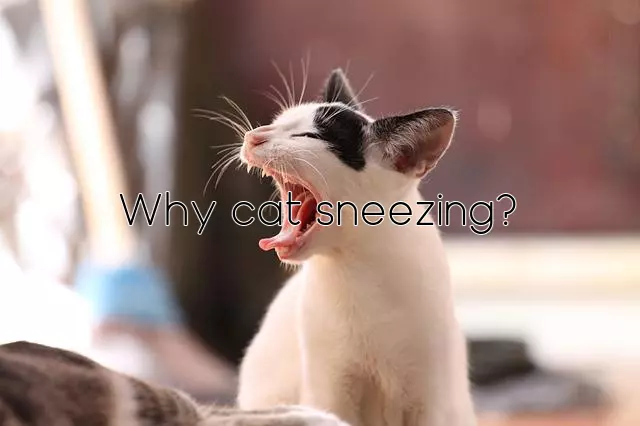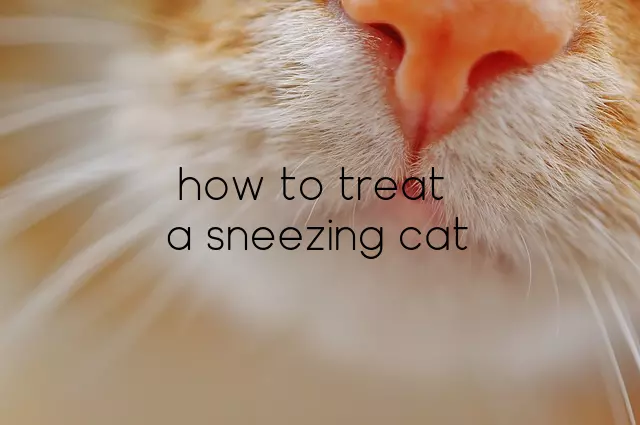A cat that sneezes in front of its owner immediately causes concern: What’s wrong with it? Is it sick? Is it a cold sneeze or an allergy? Let’s find out why your cat is sneezing and what you should do (if necessary).
Sneezing is an unconditioned reflex inherent in any mammal: this is how the body gets rid of an irritant that has entered the upper airways.
If the cat sneezes, don’t panic: it’s normal. But what should you do if the reaction has been going on for a long time? And in what cases should you consult your veterinarian?
Causes
Cat sneezing… Causes of prolonged sneezing can be both non-dangerous and carry a threat to the health of the pet.
By the way, we have already wrote why the cat sneezes frequently.
The main causes include:
Allergies
Cats are no less susceptible to it than people. As allergens act:
- home dust;
- food products;
- household chemicals;
- plant pollen;
- tobacco smoke
- etc.
It is important to remember that sneezing is not the only symptom of allergies: usually the pet has a rash on the skin, shortness of breath, discharge from the eyes.
Infectious diseases

Viral and bacterial infections are another possible cause of sneezing. The risk group includes animals with reduced immunity: kittens, elderly quadrupeds, as well as pets suffering from chronic diseases and those who have undergone surgery.
During a common viral illness, a four-legged animal is usually disturbed by nasal and eye discharge, fever, vomiting, diarrhea, refusal to eat, and general weakness.
However, there are more dangerous infectious diseases for which sneezing is an accompanying symptom.
Rhinotracheitis
A disease that affects the respiratory organs. Transmitted by contact with an infected animal, as well as through household items touched by the carrier, says aetapet.com. During rhinotracheitis the cat suffers from discharge from the nose and eyes, the eyelids are swollen, there is a cough, and sometimes vomiting.
Calicivirosis
Conjunctivitis, increased body temperature, the appearance of ulcers on the mucous membranes of the nose and mouth, apathetic condition, increased salivation – signs that suspect a pet of this dangerous disease.
Panleukopenia
The disease most often ends in death. In addition to sneezing, it is indicated by: vomiting, coughing, runny nose, rapid breathing, dehydration, lack of interest in food, weight loss, hair loss, its dulling.
Chlamydia
The main symptoms are conjunctivitis, discharge from the nose and eyes, and swollen eyelids. Chlamydia is treatable, but therapy is quite lengthy.
Toxoplasmosis
The carriers of the disease are most often rodents. An infected animal has increased lymph nodes, fever, runny nose, cough, sneezing, lacrimation, nasal discharge. The cat does not drink much and hardly eats. Toxoplasmosis is transmitted from cat to human (asymptomatic or as a normal virus). The virus is especially dangerous for pregnant women, so it is necessary to detect the presence of antibodies when planning.
Bordetellosis
The disease affects the respiratory system and eyes. The four-legged dog has difficulty breathing, and tears come out of his eyes. The pet coughs and sneezes often, and has purulent nasal discharge.
Mycoplasmosis
Transmitted by airborne droplets through contact with an infected animal. The animal’s eyes become inflamed, impaired musculoskeletal, genitourinary and respiratory system functions.
Ingestion of a foreign body
Curious cats love to explore their surroundings. Therefore, sometimes there are situations when a foreign body gets into the nose of the pet. In this case, the four-legged man begins to sneeze intensively, rub his nose with his paw and behave restlessly. Often as an irritant is an insect that got into the upper airways.
Polyps
Small growths in the nose also cause sneezing. Unfortunately, they can only be detected by a veterinarian during a face-to-face examination. The symptoms are similar to other diseases: nasal discharge, the urge to rub the nose.
Asthma

This disease is also characteristic of cats. In addition to sneezing, breathing problems are also observed – the pet breathes heavily and coughs, it is tormented by weakness and shortness of breath.
Teeth issue
Stomatitis, gingivitis and other oral diseases are sometimes accompanied by sneezing. However, this is not the main symptom, so pay attention to the presence of bad odor from the mouth, increased salivation, problems with the consumption of dry food.
Cancer
Fortunately, nasal cancers are rarely diagnosed in cats. As a rule, there is a hereditary predisposition. With the disease, sneezing is accompanied by bloody discharge, the cat does not eat well, almost does not drink, rapidly loses weight, activity is reduced.
Worm infestation
Worms cause intoxication of the body, which manifests itself in different ways, including sneezing. The pet also has gastrointestinal disorders, changes in appetite, hair loss, skin itching, and general weakness.
By the way, many parasites affect not only the digestive organs, but also the liver, heart and respiratory organs. That’s why it is important to regularly conduct treatment against worms.
Means are available in the form of:
In neglected cases, surgical intervention is required.
Important: Do not choose a drug from worms on your own! Consult a veterinarian for advice.
Follow the instructions for use given on the package of the drug. Take note of how long it takes to carry out the re-treatment. Make sure to record this date.
When to see a veterinarian?
So, if the cat sneezes for a long time, and this condition persists for several days, you should go to the veterinarian to determine the cause.
Be sure to pay attention to the presence of accompanying symptoms:
- Blood when sneezing;
- Nasal discharge (purulent or bloody);
- Tearfulness;
- rapid breathing;
- wheezing;
- shortness of breath;
- gastrointestinal disturbances;
- decreased appetite;
- general weakness, lethargy.
Diagnosis
Only a veterinarian can make an accurate diagnosis for cat’s sneeze. The specialist will conduct an interview and visual examination, prescribe tests, the results of which will determine the cause of the pathology.
Subsequently, the optimal treatment regimen will be chosen.
Treatment
Important: Sneezing for a long time is a symptom that can be associated with many diseases. Some of them are difficult to treat if detected at a late stage.
For this reason, we do not recommend treating the cat yourself, but to seek help from a veterinarian.
Treatment depends on the underlying disease.
In the case of allergies, it is necessary to find out what caused the ailment. The allergen is eliminated, the pet is prescribed antihistamines, ointments, a special diet (if food allergies).

If the disease is viral, antibiotics, anti-inflammatory drugs, immunomodulators and vitamins are prescribed. Sometimes the pet needs inpatient treatment.
If a foreign body got into the airways, it is removed with an endoscope, then, if necessary, additional therapy is carried out.
Asthmatic cats are prescribed glucocorticosteroids, the use of inhalers, sometimes antibiotics.
In the case of polyps, the neoplasm is removed with further supportive therapy.
In the case of oral problems, the doctor will eliminate dental problems.
If the cat is diagnosed with cancer, chemotherapy and surgery are necessary.
Worm infestation is treated with suitable drugs, in severe cases – by surgery.
Prevention
Whatever the cause of cat sneezing, it is important to monitor its health – this will reduce the risk of dangerous diseases. For this purpose, it is necessary to observe preventive measures.
Our guidelines
Make sure that your pet has a complete and balanced diet every day.
Its diet should be based on high-quality meat ingredients, but don’t forget vitamins, minerals and trace elements. According to aetapet.com, pre-prepared holistic, super-premium and premium foods contain the optimum balance of nutrients, proteins, fats and carbohydrates.
The diet should be appropriate for the cat’s lifestyle, health and age. Keep in mind that neutered and spayed pets need special foods to prevent obesity and urolithiasis. Follow the feeding recommendations on the package.
Remember that older animals, kittens and pets after surgery or illness have reduced immunity.
They should be protected from hypothermia. If a cat likes to sleep on a cold floor or near a window, provide it with a warm place to rest: a bed or a house.
Do not forget about hygiene of your pet. Examine its eyes and ears daily and clean any discharge with special wipes or lotions. Pay special attention to the oral cavity. Teach your cat to brush its teeth from an early age (you will need a toothpaste and a brush made especially for four-legged animals). Once a year you can have your cat ultrasound-treated at the veterinarian. By the way, treats and dry food also help remove plaque.
Regular exercise is good for your cat’s health. Encourage your cat to play by buying her exciting toys.
Keep your pet away from anything that causes allergies. Keep away household chemicals, flowering plants, do not smoke indoors. If food allergies are diagnosed, choose diets with no or reduced grain content.
Don’t let your cat come into contact with animals that live outside all the time. If you come home, be sure to clean your shoes, as viruses can be brought in on their surfaces as well.
Regularly treat your four-legged dog for external and internal parasites – fleas, ticks, worms. Consult your veterinarian about the choice of a suitable product. Do not forget to re-treat after the expiration date of the product.
Vaccinate your cat in time! This will help avoid deadly diseases.
Visit the vet once a year for a complete check-up (animals older than 7 years should be seen more often, once every six months).
To recap
Sneezing is an involuntary reflex used by the body to clear the upper air passages of an irritant that has entered them.
If a cat sneezes several times a day, it is not dangerous. However, frequent and prolonged sneezing is a sign of pathology.
This reflex is an accompanying symptom of a disease or condition, so do not hesitate to see your veterinarian. Do not try to treat the cat yourself!





